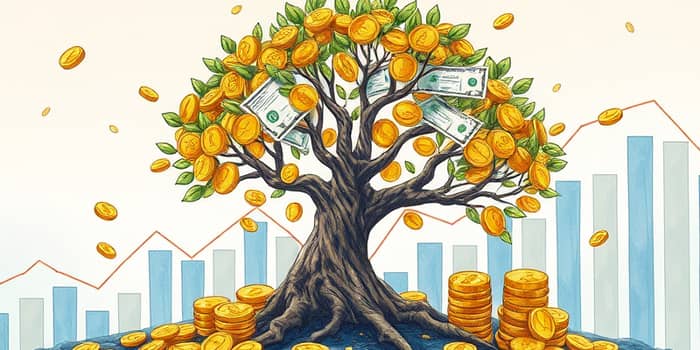
Building a steady stream of income without constant trading is possible by focusing on stocks that reward investors through regular payouts. High-dividend stocks offer an appealing path toward financial stability.
High-dividend stocks are shares in companies that distribute a substantial portion of their earnings back to shareholders. These payouts, known as dividends, often exceed the broader market’s average yield.
As of July 2025, Two Harbors Investment Corp (TWO) leads with a forward dividend yield of 16.20%. Such yields can dramatically boost total returns, especially when market growth is muted.
Investors gravitate toward high-dividend equities for several compelling reasons. First, they offer a regular income stream that is less dependent on price appreciation.
Second, dividend payments can serve as a reliable cash flow source for retirees or conservative portfolios.
Third, historical data shows that dividend-paying companies often display lower volatility during market downturns, providing a measure of downside protection.
Depending on your goals and risk tolerance, you can choose between individual stocks, funds, or both:
Understanding key terms helps you make informed decisions:
Dividend Yield: Annual dividends divided by the share price.
Payout Ratio: The percentage of earnings paid as dividends; under 80% is generally safer.
Ex-dividend Date: Investors who buy on or after this date aren’t eligible for the next payout.
Dividend Growth Rate: The rate at which dividends increase over time, a sign of financial health.
When selecting dividend payers, evaluate:
Yield: Seek yields above the S&P 500 average but avoid unsustainably high figures.
Payout Ratio: Prefer companies paying out less than 80% of earnings to preserve growth capital.
Company Stability: Look for consistent profit and cash flow records and a history of dividend increases.
Industry Trends: Utilities, REITs, energy, consumer staples, and select financials often deliver reliable dividends.
High yields can be enticing but come with caveats. Extremely high payouts may indicate underlying financial distress—so-called dividend traps.
Sector concentration can amplify risk. Dividends aren’t guaranteed and may be cut if revenues decline.
For hands-off investors, dividend-focused ETFs and index funds offer diversification and professional management. Expense ratios typically range from 0.2% to 0.6% annually.
Pros include simplified research, automatic rebalancing, and broad exposure. Cons involve limited control over individual names and exposure to market-wide declines.
Reinvesting dividends through a DRIP (Dividend Reinvestment Plan) harnesses compounding to accelerate portfolio growth. Over decades, reinvestment can nearly double ending values compared to cash withdrawals.
Automatic purchases smooth out market timing through dollar-cost averaging, reducing volatility’s impact on returns.
Qualified dividends receive favorable tax treatment compared to ordinary income, but rules vary by jurisdiction. Master Limited Partnerships (MLPs) and REITs may generate K-1 forms and complicate filings.
High-dividend stocks and funds can serve as a powerful engine for generating passive income. By focusing on yield sustainability, diversification, and reinvestment, you can build a portfolio that provides steady cash flow and long-term growth.
Whether you choose individual stocks for customization or ETFs for simplicity, a disciplined approach to research, monitoring, and reinvestment will help you achieve your passive income goals.
References













